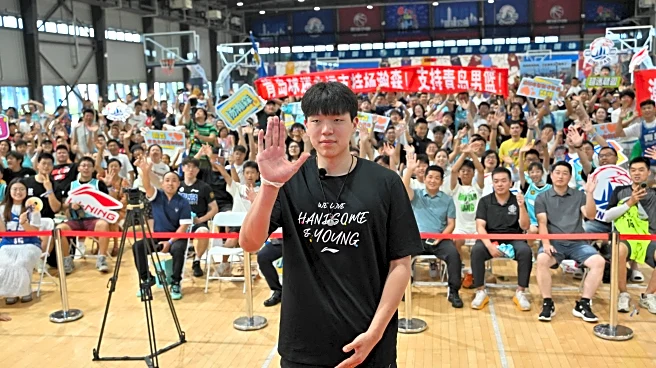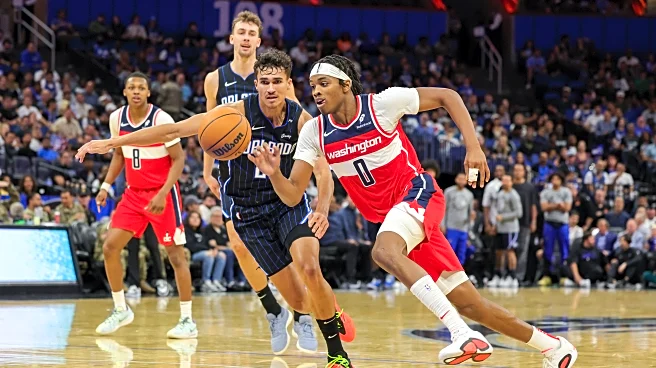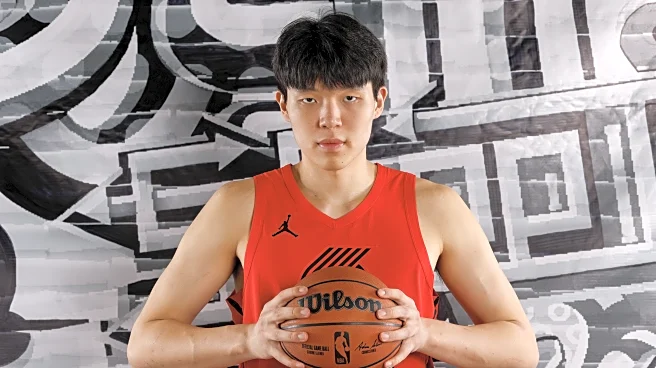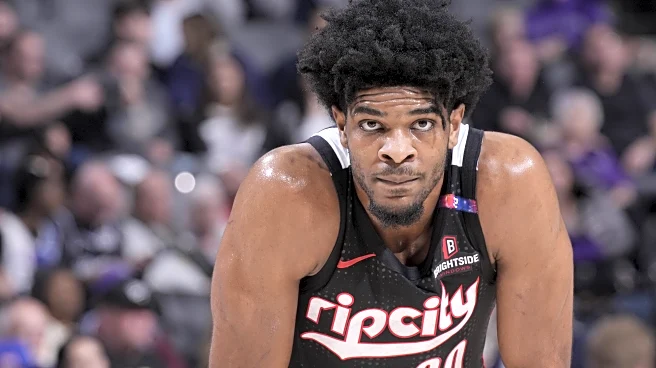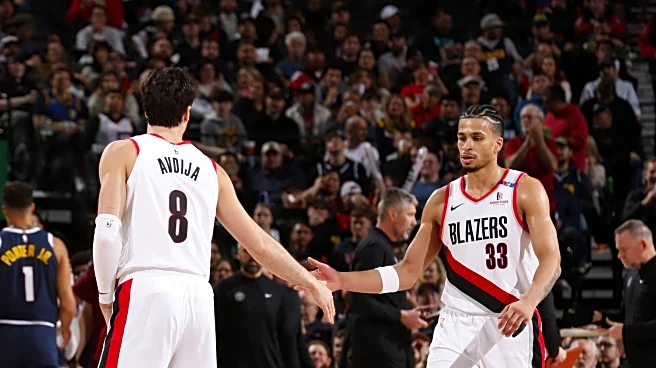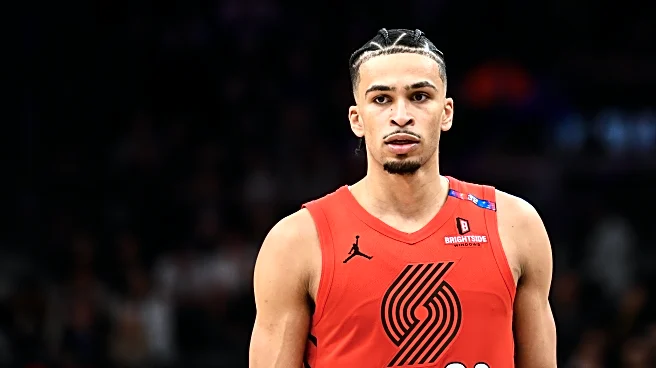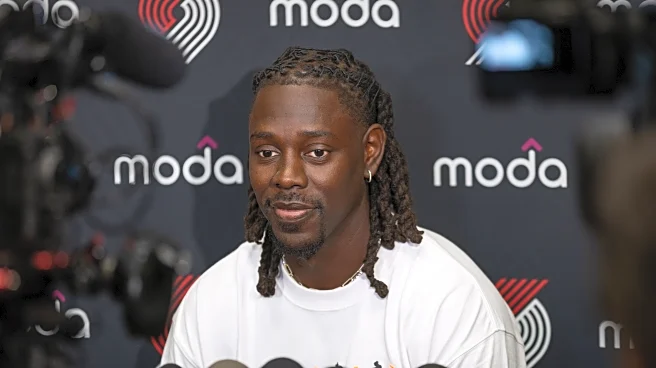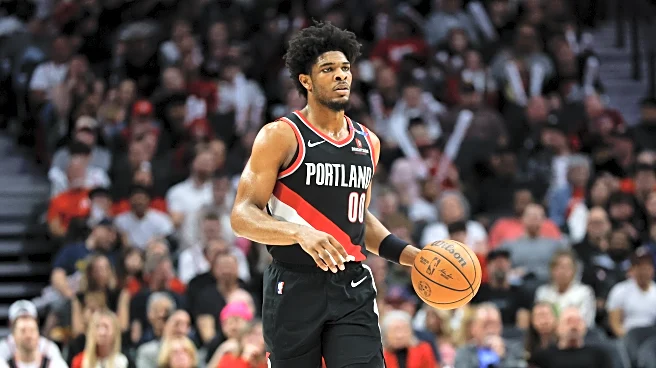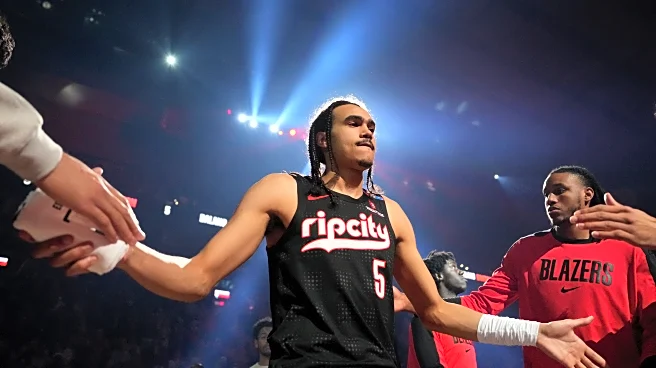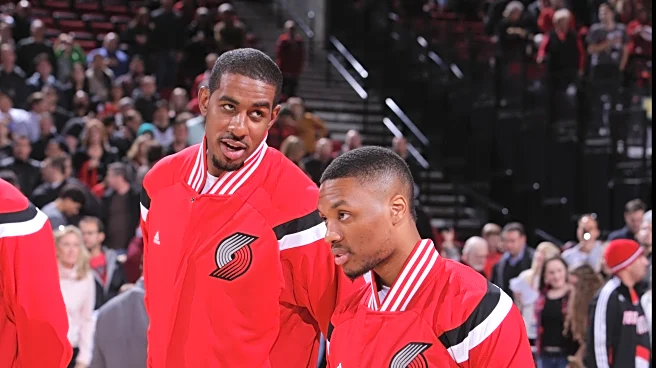The Portland Trail Blazers announced today that Scoot Henderson will be out 4-8 weeks while rehabbing a torn hamstring injury suffered during an off-season workout. With Portland’s regular-season schedule
beginning October 22nd, just shy of one month from today, Henderson is guaranteed to miss preseason and training camp. He could be out for the first month of the season as well, should his injury prove severe.
No injury is welcome news. Obviously this is a negative for Henderson and the Blazers. How bad is it really, though? Here are some of the factors that could come into play.
Recovery and Aftermath
Hamstring injuries are not uncommon in the NBA. Strains happen regularly. Tears are more rare, but they’re definitely part of the landscape.
A study of hamstring injuries between 2016-2021 published in the Muscles, Ligaments and Tendons Journal revealed that players, on average, do see a decrease in performance in most statistical categories following injury, but the most severe declines come in players over 30 years of age and players who miss more than 10 games. Henderson is under 30, obviously. The games missed category might not be applicable due to the timing of the injury, but 1-2 months would account for more than 10 games if applied to the regular season.
Hashtagbasketball lists the average recovery time for left hamstring injuries at 11 days, right at 6. The bulk of their data comes from strains, not tears. You can already see that Henderson is on the more severe end of the scale. That’s not good.
As the 2016-21 study points out, the trouble doesn’t stop there. An astonishing 171 of 210 injured players experienced subsequent, secondary injuries in the same season or the one following. Most of those were minor. Re-injuring the hamstring, plus injuries to knee, ankle, and back, were most common.
Statistical declines following injury were negligible across the board in the “under 30” category. For players who missed more than 10 games and players who suffered secondary injuries, rebounding appeared to take the biggest hit with scoring also declining in the secondary injury bracket.
In general, it appears that Henderson has a decent chance at recovering to near-pre-injury levels based on his age. The severity of the injury might cast a pall on that. We’ll need to watch for further injuries down the road. Those showing up in major ways are not a good sign.
Impact on Scoot
This injury might have an effect on Scoot beyond the general in a couple of ways.
First, Henderson’s game depends on athleticism. Bulk and quickness are his trademarks. He drives fast, absorbs contact, and finishes hard. His three-point shot has developed over two seasons in the league, but there will always be better shooters. He’s a scorer and chaos-creator. Anything that slows him down will impact the things that make him special.
Second, the timing could not be worse. The Blazers maneuvered their roster to give Henderson the clearest possible runway to minutes and a starting role this fall. He rebounded well last year following a disastrous rookie campaign. He’s at the point now where he’s expected to put it all together and become a high-functioning NBA player, likely a starter, with an outside chance of fulfilling the stardom promised by his third-overall selection in the 2023 NBA Draft.
Simply put, Scoot needed this. He needed the minutes, the responsibility, the practice time and reps, and increased confidence with the engine running on all cylinders. There could not be a worse candidate for an extended injury from a personal development point of view.
The requirement to develop synergy between teammates as a point guard adds frosting to that moldy cake. Missing training camp—some of the only extended practice time of the whole season—is not a trivial concern for a player in Scoot’s position.
Chances are Henderson will bounce back as the season progresses. The delay will be costly nonetheless. If the late start snowballs into another year of intermittent, confused development, it’s going to be tragic. The risk inherent in this injury may not be huge on the surface, but the amount of chips on the table in Scoot’s particular situation is massive. That makes the situation fraught.
Impact on the Team
It doesn’t help that point guard is the thinnest position on Portland’s roster. The Blazers added point guards this summer, but they came in the form of 35-year-old Jrue Holiday–as much of an off-guard as showrunner at this point in his career–and injured veteran Damian Lillard. The next available point guard in the depth chart after Henderson and Holiday might be Deni Avdija.
Holiday can certainly fill the starting role as the season begins. If the impact of Henderson’s injury is short-term alone, it’ll probably work out, especially if the Blazers get a minor replacement.
If Scoot has to be out longer or can’t recover fully, this definitely impacts Portland’s prospects this year. Given the age of Lillard and Holiday, it also trickles onward into subsequent seasons.
Put bluntly, the Blazers don’t have a lot in the tank at this position. Losing Henderson would be a major blow, requiring them to retool on the fly, rendering void one of the most decisive early decisions of their current reconstruction. It would plunge them back into rebuilding mode just when they were trying to get out of it.
If that happens, all eyes turn to Shaedon Sharpe, Portland’s lottery selection just prior to Henderson. If Sharpe becomes a star, all is well. Anything less and the Blazers’ rebuild will only count back to 2024. It will be laid on the backs of 7-footers Donovan Clingan and Yang Hansen alongside Avdija and Toumani Camara. That’s a far different story than Henderson and Sharpe flourishing as the major talents they were anticipated to be.
Conclusion
As we said at the top, Henderson’s injury is not good news for Portland. It’s reasonable to say that we don’t have to overreact to the hamstring tear as such. Plenty of NBA players suffer them. It’s also reasonable to say that this injury has landed on the most vulnerable player on the roster, who also plays the at most strategic and volatile position on the team. Any exhale regarding the micro-effects of the injury are balanced by holding our collective breaths about the potentially-huge macro-effects.
The end result is a variable situation. Possible outcomes range from, “Steady onward, just with a small delay,” to, “This is the CTRL-ALT-DEL ‘blue screen of death’ moment on Portland’s latest rebuild before the thing even booted up all the way.” Where on the spectrum this event lies will depend on Scoot’s physical condition and his continued development.
Ah well, even if you can’t say all is good in Portland, at least we can say it’s never dull around here, right?
Sigh.

